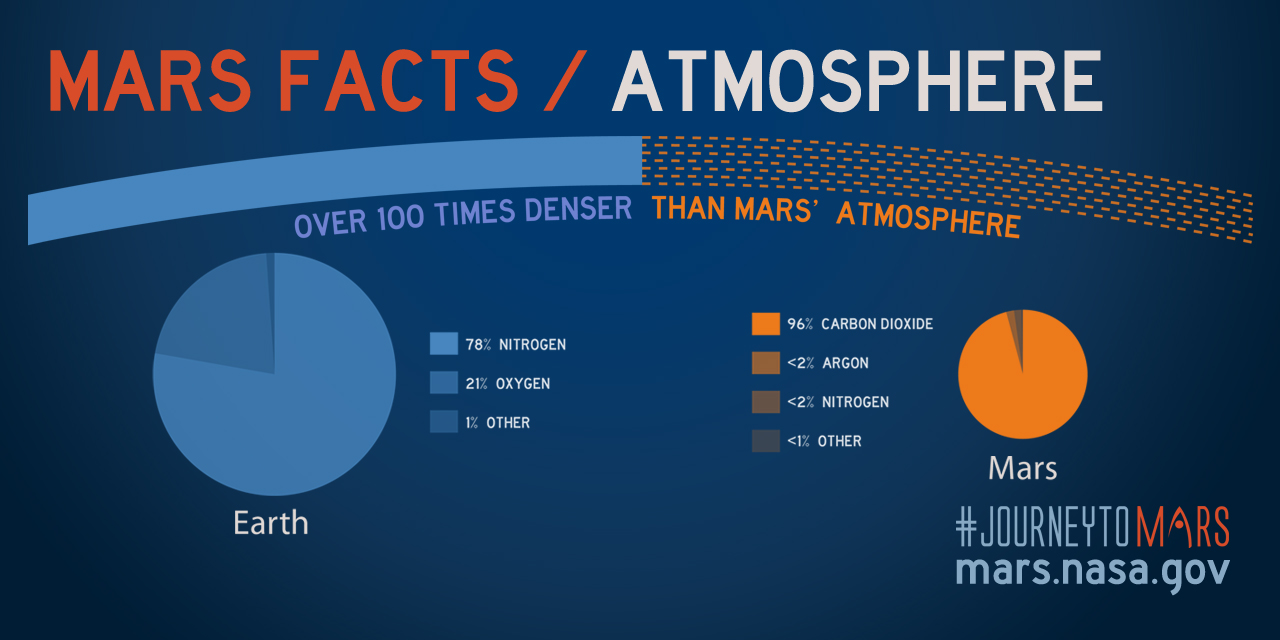Article: Mars Atmosphere
- Due Oct 27, 2017 at 11:59pm
- Points 3
- Questions 3
- Available Sep 5, 2017 at 7:30am - Oct 27, 2017 at 11:59pm
- Time Limit None
- Allowed Attempts 2
Instructions
MAVEN Orbits Mars, Investigates Atmospheric Mystery

Mars' atmosphere is so thin, it amounts to less than one percent of Earth's. Yet the Red Planet at one time apparently had rivers and lakes, which suggests it also once had a much thicker atmosphere. Earth's thick atmosphere of gases traps heat from the sun and allows life to survive. Mars once had an atmosphere like that, and Mars was warm and wet — but now it is cold and dry. Where did this thick Martian atmosphere go? Solving that mystery is the main goal of NASA’s Mars Atmosphere and Volatile Evolution (MAVEN) spacecraft, which arrived in orbit around Mars on Sept. 21, 2014.
MAVEN Pulled Into Orbit
“One of the really overarching questions about Mars is whether there was ever life,” MAVEN's principal investigator Bruce Jakosky said last week. Life, most scientists assume, would have required liquid water — as all life on Earth does. MAVEN will measure Mars' current atmosphere. Scientists will then use those measurements to try to understand what might once have been there and how it was lost. MAVEN has been traveling toward Mars since its launch in November 2013. In 2014, it completed a tricky move that allowed Mars’ gravity to pull it into orbit. Its instruments began taking scientific measurements in November 2014.
India's Orbiter Arrives
 MAVEN scientists coordinated with the researchers behind India’s Mars Orbiter Mission, which arrived on Sept. 24, 2014. While MAVEN will focus just on Mars’ upper atmosphere, the Indian mission will be broader: It will record images of the planet’s surface and atmosphere. Mars Orbiter's science capabilities are simple compared to MAVEN’s. Still, if it succeeds in reaching Mars, it will make history as the first Asian spacecraft to do so. Mars’ thin atmosphere is 95 percent carbon dioxide, with small amounts of nitrogen, argon, oxygen and other chemicals. Scientists have two main possible explanations for how the bulk of the atmosphere could have escaped: It could have seeped down through the surface to the planet’s crust, or floated up and been lost to space.
MAVEN scientists coordinated with the researchers behind India’s Mars Orbiter Mission, which arrived on Sept. 24, 2014. While MAVEN will focus just on Mars’ upper atmosphere, the Indian mission will be broader: It will record images of the planet’s surface and atmosphere. Mars Orbiter's science capabilities are simple compared to MAVEN’s. Still, if it succeeds in reaching Mars, it will make history as the first Asian spacecraft to do so. Mars’ thin atmosphere is 95 percent carbon dioxide, with small amounts of nitrogen, argon, oxygen and other chemicals. Scientists have two main possible explanations for how the bulk of the atmosphere could have escaped: It could have seeped down through the surface to the planet’s crust, or floated up and been lost to space.